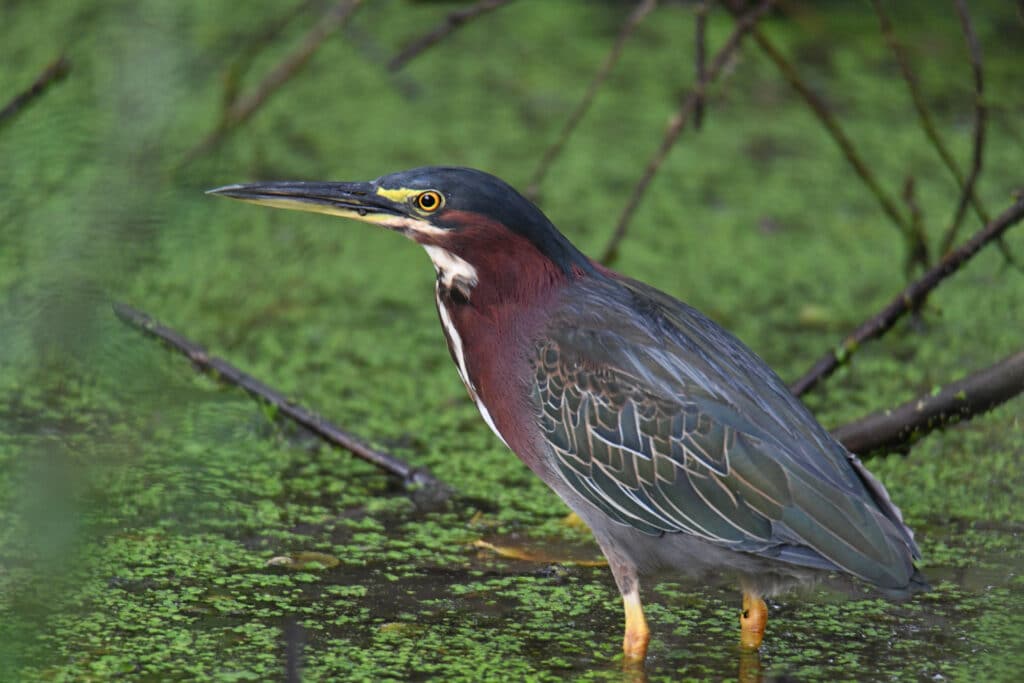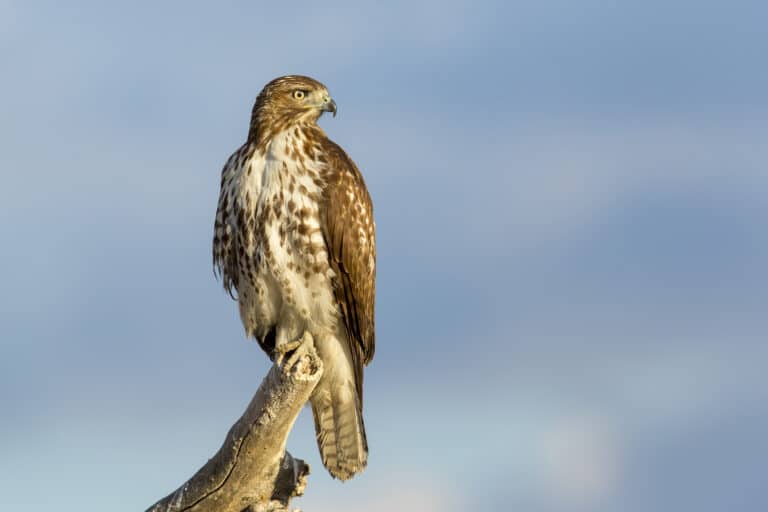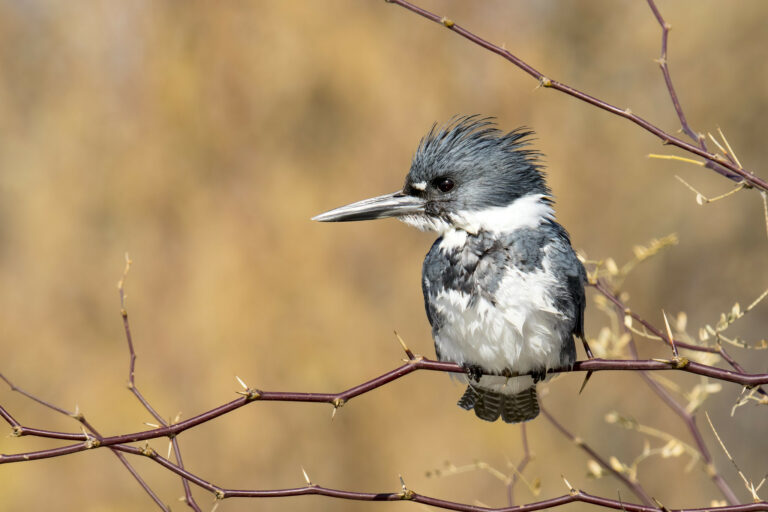Small and stocky, the Green Heron is a common wading bird of North and Central America but is easily overlooked. While larger herons tend to feed out in the open waters of wetlands, Greens are usually along the more shallow edges and are often concealed by dense vegetation. While in the shade, they may appear to be black, but get this stunner out in the sun and you’ll be treated to its luscious, greenish blue back and cap, dark chestnut shoulders and neck, striking yellow eyes and legs, and the beautiful little detail of lightly edged flight feathers.
Green Herons are migratory but they can be found in Tucson year-round at most local parks with ponds ringed by dense vegetation. Look for them feeding (day or night!) on fish, frogs, insects, crustaceans, or reptiles at Columbus Park, the pond behind the Hardesty Building near Reid Park, and especially Sweetwater Wetlands where a couple have been fairly easy to see lately. They are among the few tool-using birds, using baits such as feathers, pieces of bread, live insects, twigs, and berries to lure fish in. Surprisingly, they have also been seen diving into deep water and swimming long distances back to shallow water like “little swans.”
Green Heron behaviors and genetics have given the species many interesting names. Because it tends to fly away from disturbances giving a stream of white defecation, it has been called the “fly-up-the-creek,” “shite-polk,” and “chalk-line.” It is also part of a complex of related herons that when considered one species is called Green-backed Heron. When split, they are the Green Heron (or Little Green Heron), the Striated Heron, and the Galapagos (Lava) Heron. Despite the confusion, and whatever you want to call them, these are all beautiful birds!




